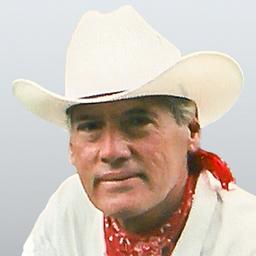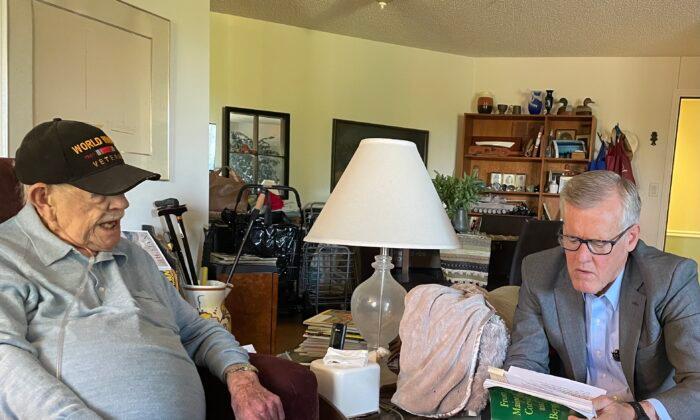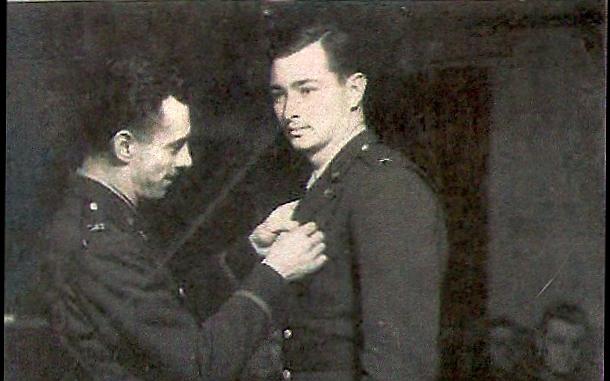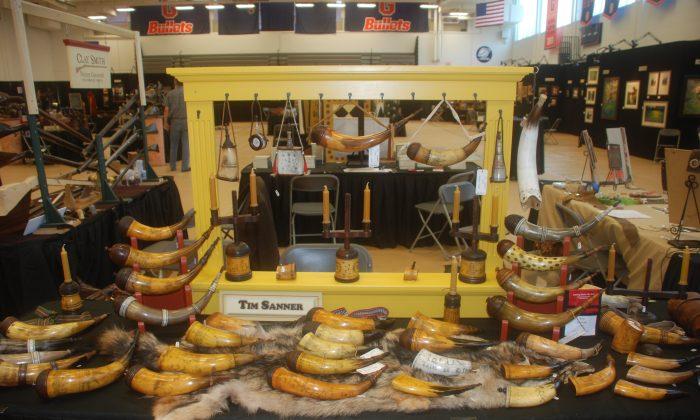“It’s the Caribbean you can drive to. You don’t have to change your currency, you don’t need a passport. This year was the best year for anyone in the Keys. We’ve tapped into a market we’ve never had before. No hurricanes. The Keys are family friendly,” Robert DiGiorgio said. The affable owner of Bayside Grille said it all. In a world of turmoil, when air travel has become an uncivilized hassle, more people are turning to vacations they can drive to without leaving the U.S. Foreign visitors have discovered the America they always dreamed about and Key Largo has become one of the most popular destinations.
The name will live forever from the classic film ‘Key Largo.’ Humphrey Bogart and a cast of stars defeated the evil ‘Rocco’ portrayed by Edward G. Robinson, Hollywood’s archetypical villain actor. Fictional Key Largo, filmed mostly at a movie studio, was never as beautiful as the real Key Largo. Only a short drive from Miami, as soon as the Keys begin, there is a magic that seems to take over. Water on the ocean side is azure, the bayside blue and green. Mangroves stretch forever along the Overseas Highway, the name for U.S. 1 in the Keys. There are coves and bridges, islands and marinas, vast areas of nothing but natural beauty on both sides of the road.
Key Largo appears as a settlement sprouting along the highway. Visitors know Scuba diving, snorkeling, deep sea fishing and all manner of water sports are paramount. There is no way it can be missed. Huge red dive flags with their diagonal white stripes fly from flag poles everywhere. Scuba adventure awaits; fine dining and accommodations abound. What is immediate is the wonderful aura that seems to take over. There is a special relaxed atmosphere in the Keys. People that have come to these islands connected by bridges settled and decided to work in the area because it is a determined lifestyle. There is a courtesy, an unhurried efficiency and politeness in this ‘Conch Republic,’ that takes over.
The Florida Keys National Marine Sanctuary is trustee for America’s one and only barrier reef. The reef is about five-and-a-half to six miles offshore on the Atlantic Ocean side. The Florida Keys stretch in an arch south of Miami to Key West for about 220 miles. Sanctuary legislation was enacted by the U.S. Congress in 1990 and now takes in some 2,900 square miles including the Dry Tortugas. Within the sanctuary leisure activities are conducted with care. There is no anchoring to protect coral. Mooring balls are provided, channels are clearly marked, restricted areas are designated and there is a no touch, no take proviso. Divers enjoy clear water that varies with the season from the low 70s in winter to 85 degrees in summer.
Headquarters for the Florida Keys National Marine Sanctuary is in Key Largo as is the John Pennekamp Coral Reef State Park. Statistics reveal that over three million people visit the Keys every year. Many try diving for the first time. Scuba schools abound and certification courses are available. Certified divers find dive boats with friendly, knowledgeable crews that make regular trips out to the reefs. Boat rentals are available and launching ramps are plentiful.
Amy Slate is a veteran Scuba instructor in Key Largo. She is also a notary public empowered to perform marriages. Amy owns Amoray Dive Resort. The resort’s two moray eels formed into a heart is their classic logo. The resort is located at Mile Marker 104 Bayside. That is how locations are designated in the Keys. Small green marker signs proclaim the distance to Key West which is ‘0.’ Amy Slate’s resort is then 104 miles from Key West. What better place to take lodging. Amy’s cove is perfect for swimming or snorkeling in the bay. A variety of rooms and suites are available along with dive packages. Amy’s two dive boats are moored at their dock.
The swimming pool can be used for a refreshing fresh water swim. Dive instructors use it to teach beginners how to dive in its heated water. The resort has a full service dive shop and fill station. There are hot showers and changing rooms as well as a wet gear storage room, convenient for those staying over that want their gear to hang out to dry. The bayside location with Chiki Hut coverings is a wonderful place to view sunsets. The Keys are blessed with amazing sunrise and sunset vistas. Clouds turn pink and violet. It is no wonder many couples come to Amoray Dive Resort to celebrate their weddings or special occasions in this magic setting.
Captain Mike Brooks takes divers out aboard ‘Amoray Diver,’ a large, comfortable pontoon boat. Tanks are stowed in racks and the bench seats and well made ladders make it a perfect dive boat. Captain Mike is a fourth generation Floridian. His ancestors were pioneers in Florida settlement. Mike began diving at an early age when his father, a retired Ft. Lauderdale, Florida police officer, opened a dive store. They took their divers to Key Largo and worked with Amy Slate’s operation.
Captain Mike took us to the site of the ‘City of Washington,’ a 320-foot long steam vessel that ran aground on Elbow Reef in 1917. The ‘City of Washington’ was in Havana Harbor when the U.S.S. Maine blew up in 1898. It served in the rescue operation and as a hospital ship for the injured. Much later the vessel was converted into a coal barge and was being towed when it sank on the reef. There is marine life galore among the twisted steel plates of the wreckage.
Captain Mike next put us on the wreckage of what used to be called ‘Mike’s Wreck.’ Recent investigation has revealed that it is the wreckage of the Hannah M. Bell, a British freighter that sank in 1893. This steel hulled vessel also grounded on he shallow reef. Like everything in the shallow waters of this magnificent offshore barrier reef, the twisted steel plates are overgrown with corals and attaching marine organisms. Lobsters, protected by sanctuary regulations, are friendly and pose for pictures. Amoray Dive Resort Scuba instructor and dive guide Opus Miller helped divers with their gear and handed underwater cameras to photographers.
Right smack in the middle of Overseas Highway at mile marker 99.2 is a huge building that resembles a gigantic block-house. Marine artist Wyland created a masterpiece of its walls. U.S. 1 passes on either side of the building set in the median making it a special landmark. Whales, dolphins, scuba diver, sea turtles and all manner of marine life grace the sides of the building. Home to Scuba-Fun, the building is itself, with Wyland’s amazing murals, legendary.
Scuba Instructor Anya Elis created Scuba-Fun to cater to German tourists. “Eighty percent of our divers come from Europe. All of our instructors speak at least two foreign languages,” Rafael Kubiac, one of Anya’s dive instructors, said. Our dive guide, Scuba Instructor Holger Hartmann, greeted us and prepared delicious coffee upstairs in the dive center’s classroom. Rafael offered real German chocolates. Just what was needed to start the day. It was the best coffee we had thus far in Florida.
Scuba-Fun is a full service dive shop. They specialize in instructing and guiding divers. We followed Holger to Captain Scott’s ‘Sea Dwellers’ dive boat at a nearby marina. There was plenty of room aboard and we were immediately made to feel comfortable and welcome by Captain Scott and his crewman.
The ride out to Molasses reef took about forty-five minutes. ‘Sea Dweller’s’ covered deck provides shade from the sun. A walk around bow area is available for those that want to get a tan.
Captain Scott gave us a complete boat and site briefing. Holger detailed the reef sites we would be diving. “It was my dream to get my green card and come to America,” Holger said, his great enthusiasm for diving evident. We pulled up to a mooring at Molasses Reef. Once we were tied off Captain Scott gave divers an overview of the reef structure. Holger went in first and we followed. When Captain Scott told us about an old Spanish anchor that was underwater, likely from the 1733 treasure fleet that sank in these waters, we asked Holger to take us to it. The large anchor was intact and overgrown with coral. The flukes unmistakable, its shank festooned with hard and soft corals. A large brain coral grew up from the shank. The anchor ring was intact and overgrown with fire coral.
Since diving in the Keys is usually in twenty-five feet of water no long surface intervals are necessary. Captain Scott moved the dive boat to another site on Molasses Reef. We changed over tanks, took a short break in the sunshine then jumped back in the water. Holger guided us between long fingers between the reefs. A small green turtle was browsing on marine growth. It didn’t seem to mind at all having its picture taken. Nobody harasses marine life in the sanctuary. Fish, moray eels, turtles and other ocean dwellers have no reason to swim away from divers. Underwater creatures pose to have their pictures taken.
Dolphin encounters in the wild happen but are rare indeed. We sought to meet these enchanting marine mammals in their own cove. We went to Dolphins Plus at Dolphins Cove located at Mile Marker 101.5 bayside. Dolphins Plus also has a facility at Mile Marker 99.5 on the ocean side. The centers have fenced, protected coves where dolphins that have been born in captivity share their lives with visitors.
We booked a structured swim program at their bayside center. It is a large facility with modern office and gift shop, conference rooms and research quarters. We were greeted, signed in and escorted down to the briefing area under a covered portico. Ethan Kleinschmidt briefed us on dolphin behavior and about the swim program. We were given wetsuits and life jackets then walked the short distance to the cove. The twelve bottle nose dolphins that make the cove home were cavorting with trainers on the dock. We climbed down ladders and into the bay with the dolphins.
As Ethan said, these beguiling marine mammals swam with us for the hour long program in the water. Trainers on the dock sent two dolphins, Leo and Julie, out to us to interact. They blew bubbles underwater, jumped through a hoop, gave rides and brought smiles to everyone. Even trainers that work with the dolphins every day were enthusiastic. How could they not be interacting with these amazing and intelligent creatures.
By the end of the day we were famished. We didn’t want to miss sunset over the bay. We showered and dressed at Dolphins Plus then drove to Robert DiGiorgio’s Bayside Grille at nearby Mile Marker 99. A combo was already playing soft island music. Hungry as we were, the pier beckoned and we walked out to take pictures. A huge yellow then orange fire ball sun descended over the bay.
Tables are set downstairs where casual dining and a bar is available for lunch and dinner. Upstairs dining at Bayside Grille offers the most delicious food in Florida. Heather Seal from Ohio served us. Bayside Grille owner Robert DiGiorgio greeted us. He described the fresh ingredients that have made the restaurant famous.
We chose seared scallops. They came to table on wooden skewers, ginger dusted, accompanied by a tower of jasmine rice and red beans. The scallops were tender and savory. Fish dishes are a specialty at Bayside Grille. Their candied walnut crusted Mahi is a treat. Steak lovers have ample certified Angus beef to choose from. The flame grilled New York strip steak came to table perfectly prepared, juicy and tender.
Bayside Grille had such an amazing location we decided to take time to return for luncheon. How could a location right on the azure bay, islands and sailboats in the distance, miss. The food is delicious. Lunch appetizers include their special conch fritter bites, what they call a bait bucket of Caribbean seasoned flash fried shrimp and calamari and of course Bayside Grille’s famous home made soups and salads. Bring an appetite since Bayside Grille’s luncheons and dinners are served in ample portions.
Nearby, at Mile Marker 102, is another amazing restaurant. The catchy name draws immediate attention since it is the moniker for a fisherman’s device to remove hooks from their catch. Steve Bencomo’s family has always been in the restaurant business. Originally from Cuba, Steve’s parents settled in Miami where they became well known restauranteurs. Steve’s dream was always to find his own place in the Keys and open a restaurant.
The opportunity finally presented itself and just a short time ago Steve took over D-Hooker. The restaurant is unique. They have the full NFL package. Twelve large screen televisions make it a popular sports bar. That said there is delicious sports bar food including wings, ribs, nachos as well as a seafood menu that will knock your socks off.
D-Hooker is a family restaurant that offers only fresh caught seafood. There are stone crab claws from local sources, Mahi Mahi, yellow tail, snapper, lobster, hog fish and flake off the bone baby back ribs. No one goes away hungry at Steve Bencomo’s restaurant.
For any that think they can get away with it try Steve’s Monster D-Hooker Man vs Burger. The challenge was accomplished by a diner that ate the entire burger with its generous serving of french fries in three minutes twenty-six seconds. If you can beat that record the burger is free and they will even throw in a free D-Hooker T-shirt. However you eat it, the food is delicious, ambiance fun and service friendly.
Key Largo is America’s diving destination. It is supported by a strong tourism infrastructure. Businesses cater to visitors and there are accommodations to suit every taste and budget. For more information contact the Key Largo Chamber of Commerce at 305-451-1414 or visit www.keylargochamber.org. Handy contact information includes Amoray Dive Resort toll-free at 1-800-426-6729, Scuba-Fun at 305-394-5046, Dolphins Plus at 305-451-4060, Bayside Grille at 305-451-4885, D-Hooker at 305-451-4105.





